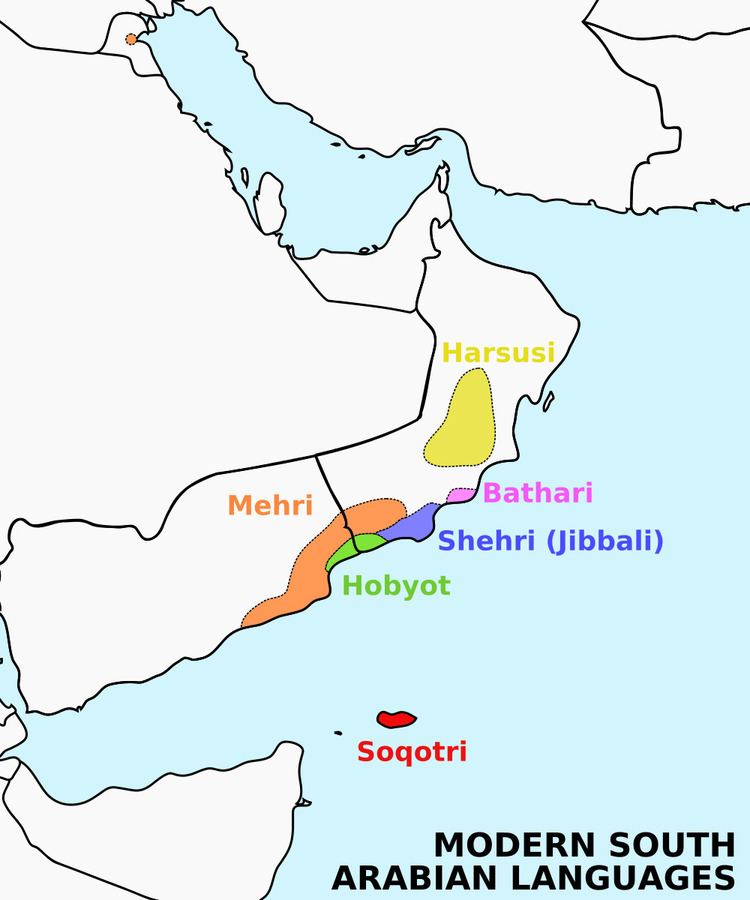Glottolog: mode1252 | ||
 | ||
Linguistic classification: Afro-AsiaticSemiticSouth SemiticModern South Arabian Subdivisions: BathariHarsusiHobyótMehriShehriSoqotri | ||
The Modern South Arabian (Eastern South Semitic or Eastern South Arabian) languages are spoken mainly by small populations inhabiting the Arabian Peninsula, in Yemen and Oman. Together with the modern Ethiopian Semitic languages, they form the South Semitic sub-branch of the Afro-Asiatic family's Semitic branch.
Contents
Classification
In his glottochronology-based classification, Alexander Militarev presents the Modern South Arabian languages as a South Semitic branch opposed to a North Semitic branch that includes all the other Semitic languages. They are no longer considered to be descendants of the Old South Arabian language, as was once thought, but instead "nephews".
Grammar
Modern South Arabian languages are known for their apparent archaic Semitic features, especially in their system of phonology. For example, they preserve the lateral fricatives of Proto-Semitic.
Additionally, Militarev identified a Cushitic substratum in Modern South Arabian, which he proposes is evidence that Cushitic speakers originally inhabited the Arabian Peninsula alongside Semitic speakers (Militarev 1984, 18-19; cf. also Belova 2003). According to Václav Blažek, this suggests that Semitic peoples assimilated their original Cushitic neighbours to the south who did not later emigrate to the Horn of Africa. He argues that the Levant would thus have been the Proto-Afro-Asiatic Urheimat, from where the various branches of the Afro-Asiatic family subsequently dispersed. To further support this, Blažek cites analysis of rock art in Central Arabia by Anati (1968, 180-84), which notes a connection between the shield-carrying "oval-headed" people depicted on the cave paintings and the Arabian Cushites from the Old Testament, who were similarly described as carrying specific shields.
